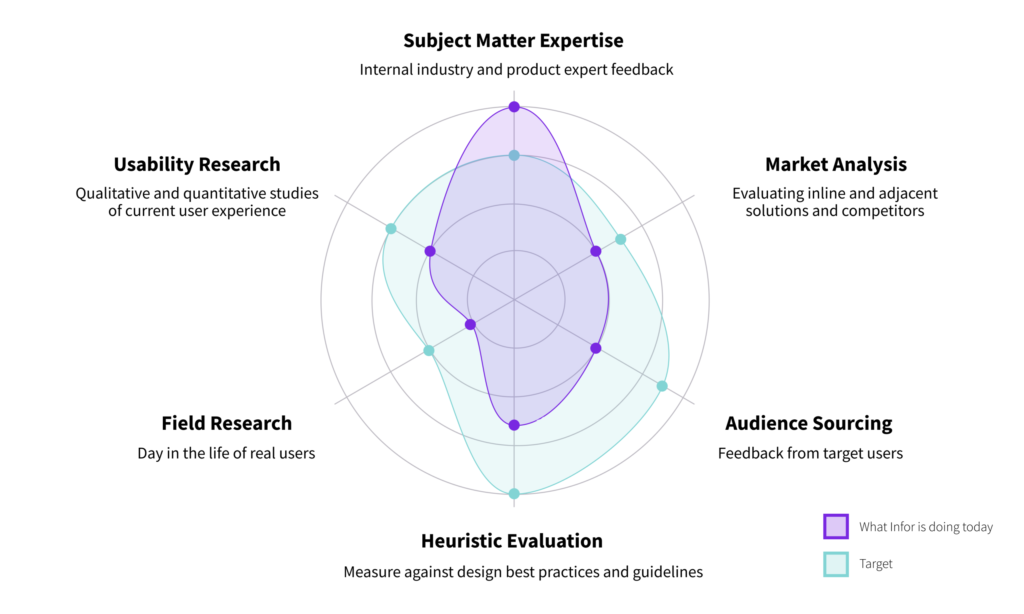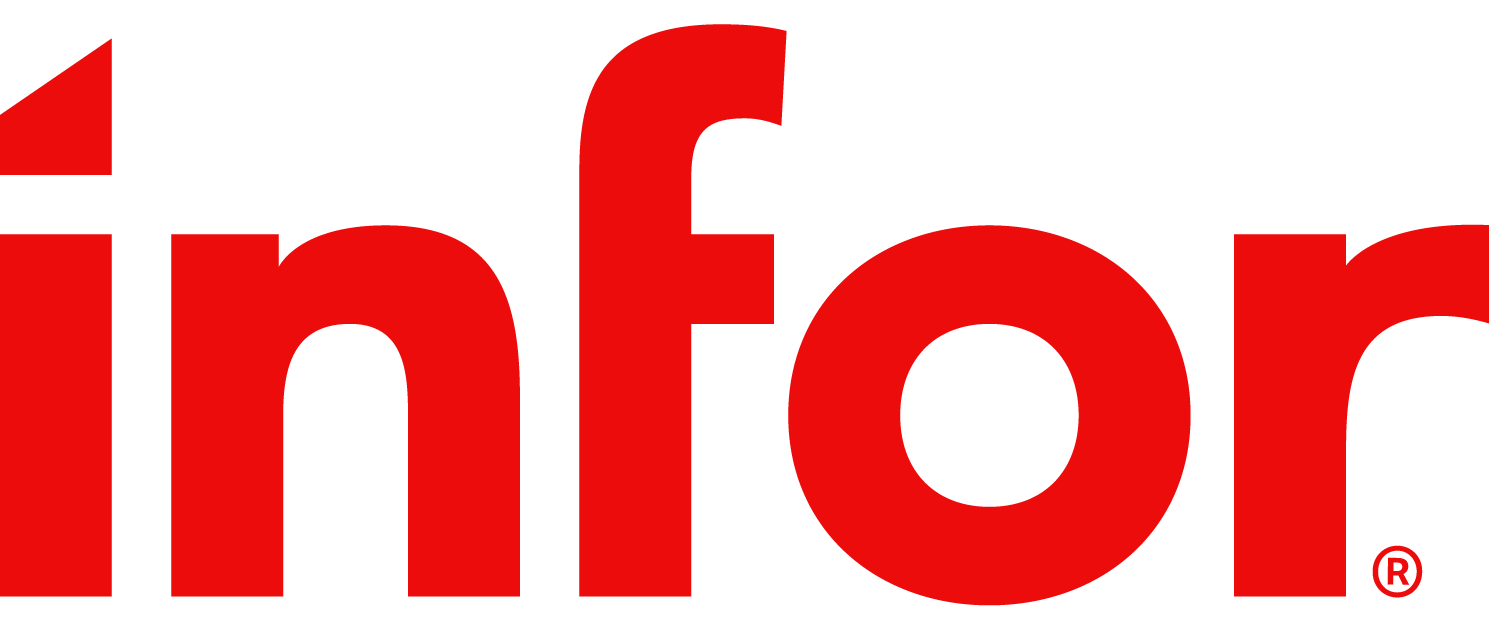About UX Research
Please note: This content reflects industry best practices. We’ve provided links to third-party resources where appropriate.
What’s UX Research
UX research helps you better understand your product’s users, so you can create solutions they actually want. UX research can result in findings that are both quantitative (numerical, measurable, generally objective data) and qualitative (observations, emotions, behaviors, opinions, generally subjective data). By combining data from both methods, you’ll be better able to empathize with our customers.
Why Does It Matter
If you don’t know who you’re building the product for, then you don’t know why you’re building it. If you don’t know why, then it doesn’t really matter how you build it—you’re already on the fast track to disaster. UX research is integral to the development and enhancement processes because it teaches you about your users’ behaviors, goals, motivations, and needs. It shows you how they navigate systems, what their pain points are, and—most important—how they feel when interacting with your products.
When Do You Conduct It
The earlier the better. You can leverage insights gathered from UX research at every stage of design, development, and testing.
| Plan and Define | Design and Build | Deploy and Evaluate |
|---|---|---|
| Identify the right problem or opportunity. | Build confidence in your design. | Measure, benchmark, and iterate. |
| Before creating a new product or feature, research can help you uncover important problems that users have or new opportunities to help users better achieve their goals. These insights can help you identify new ideas, validate assumptions, or provide direction—especially when prioritizing a product roadmap. You can also use research at this stage to identify, build, or update user personas. | UX research can help you generate or validate potential solutions to ensure that they meet your users’ needs. You can test multiple designs, navigation structures, layouts, and overall usability. Validating directly with users helps eliminate the risk of poor usability and incorrect assumption. The level of validation needed should match the investment risk, so you can be confident in your design. | After new designs are deployed, measure the product’s UX by benchmarking against past performance and/or competitors. You want to ensure that you have the right monitors in place to gather product analytics and collect user feedback, so you can continuously improve the UX. Add new ideas to your backlog, and then start the cycle again when you’re prioritizing enhancements for the next release. |
Before starting any product UX design, it’s important to define your user persona.
The typical process for conducting UX research is:
- Define the problem and establish your research goal.
- Select a UX research methodology and share with stakeholders.
- Document a UX research plan.
- Recruit participants and launch the research study.
- Collect and analyze the results.
- Summarize your findings and share with your stakeholders.
Who Can Conduct It
UX research is typically conducted by designated UX researchers, but usability analysts, UX designers, and business analysts can do it, too. In fact, UX research can be done by anyone working on the design of a product, as long as they use the appropriate methodology and best practices.
How Much Is Ideal
Your users, the market, and technology are constantly evolving, so it’s unnecessary—and impossible—to do everything on every project.
Use UX research to get accurate and impartial insights about your users’ most urgent needs, which can help you prioritize your product roadmap. It’s often helpful to use a mix of methods and address ongoing needs during each iteration. Listen throughout the research and design cycle to help understand existing and new issues. Analyze gathered data and monitor new information for patterns and trends.
The Infor Design team has developed the following UX assessment map, which outlines six dimensions of user research that you should consider. If time and resources are limited, we recommend that you conduct a heuristic evaluation at a minimum. The accompanying table details the six dimensions and the research methodologies that you can use.

Infor’s nearly two decades of experience has cultivated subject matter experts (SMEs) with deep knowledge of the customers we serve. As an organization, we do well getting internal input from SMEs, but we can diversify how we gather information about our users.
Heuristic Evaluation
Evaluate a product’s usability based on design heuristics guidelines.
Value
- Easy to conduct without user participation
- Quick wins
Limitations
- Scope of analysis is limited and doesn’t consider complex user workflows.
Example Methodologies
Subject Matter Expertise
Feedback from internal stakeholder experts: industry SMEs, business analysts, product managers, solution consultants, etc.
Value
- Insights from experts in industries/fields with a good understanding of customers
- Easier to gather feedback internally than from customers
Limitations
- Secondhand information, which may include some biases per the SMEs’ experience with specific customers
Example Methodologies
- Interviews
- Focus groups
- Surveys
Market Analysis
Comparison to best performers and competitors with inline and adjacent solutions.
Value
- Good reference to how similar products are used and designed in the market
Limitations
- Reactive to what others are doing and could be limited to table stakes, rather than what will wow the customer.
Example Methodologies
- Secondary research
- Competitive intelligence
Usability Research
Feedback from users about how easily they interact with the product, to identify gaps and issues.
Value
- Validates assumptions and uncovers opportunities to improve.
Limitations
- Users may say that they behave a certain way, but in practice this may not always be accurate
- Customers and users could be hard to source
- Users could be too entrenched in Infor’s solution and are too used to Infor’s current ways of doing things to give valuable feedback
Example Methodologies
- Usability testing
- Tree testing
- Card sorting
- Click testing
- Surveys
- Interviews
- Focus groups
- Site/product
- analytics
Field Research
Observing a user’s day in the life, in their own environment, to understand their needs.
Value
- Observing users directly can define what they really do, rather than what they say or think they do.
Limitations
- Resource intensive, as field research needs a longer amount of time
- Customers and users could be hard to source
- Users could be too entrenched in Infor’s solution
Example Methodologies
Field studies, such as:
- Direct
- Customer visits
- Contextual inquiry
Audience Sourcing
Uses anonymized demographic analysis tools to put designs in front of real users for usability feedback.
Value
- Tests prototypes with similar target audiences, without the bias of being a current Infor customer.
Limitations
- Depending on the scope of the study, audience sourcing may be financially costly.
Example Methodologies
- Surveys
- Interviews
- Focus groups
- Usability testing
- Tree testing
- Card sorting
- Click testing
UX Insights FAQs
What does UX Insights team do?
UX Insights, part of Infor Design, is a global team that aims to empower decision makers at Infor with data collected through research and analysis. Our goal is to reveal actionable insights about users’ needs to create cloud solutions that make them feel productive and satisfied.
We conduct UX research and analysis, produce benchmarking reports, and provide consulting services and content strategy. We assist product management teams throughout Infor and support Infor Design on high-priority strategic initiatives. UX Insights publishes UX research best practices, resources, and enablement as well as past research reports.
We use Maze research tools and services. We have also partnered with i360 and Usability Sciences in the past for conducting specific research.
How can UX Insights help me?
We can help you conduct your own research, based on any resources you have—or don’t have. Just reach out to us at uxinsights@infor.com.
I want to conduct my own UX research, but I need help getting started. Who do I reach out to?
Check out our UX research resources page, for starters, for a list of different research methodologies and resources that you can leverage. You can also leverage our tips on asking good questions.
If you still need help, please reach out to uxinsights@infor.com with your research goals. We’ll provide guidance and support, depending on our capacity. You can use our UX research plan template to help define your goals.
I don’t have resources to conduct research. How can I get help?
Don’t fret—the UX Insights team can still help you. Email us at uxinsights@infor.com with your research needs. If we’re unable to conduct the research for you, we can connect you with our third-party research partners for a quote. We’ll also continue to help you along the way.
How do I know if I’ve done enough research?
Check out our UX assessment map, which provides some guidance about a balanced UX research approach.
I want to do some research with my customers. How do I engage them?
Work with the Customer Collaboration Program, provided by Infor’s product management teams.
My customers aren’t available for user research. What do I do?
You don’t need customers to do UX research. You can conduct a heuristic evaluation, or use a research panel with users who share similar characteristics: industry, role, etc. Contact us at uxinsights@infor.com, and we can connect you with one of our research partners for a quote for services.
How many participants do I need for my study?
It depends on the type of study. As a guide, for qualitative studies, test with at least 5 research participants, but no more than 10. For quantitative studies, aim for at least 30 participants to reduce the margin of error. There isn’t a one-size-fits-all number of participants for UX studies, so use your best judgement.
I just completed some user research and I think that others may benefit from it. How can I share?
We’d love to help you share your research if it meets the needs of other industries and/or products. Please send over your research study report to uxinsights@infor.com.
I have general feedback or suggestions for improvement for the UX Insights team and/or the published content. Who do I talk to?
You can always reach us at uxinsights@infor.com.
Resources
Learn More
- Creating a UX Research Plan (Video)
- Defining UX Research Problems Through “How Might We” Questions (Article)
- Making UX Research Goals Specific (Video)
- UX Without User Research Is Not UX (Article)
Questions or feedback? Contact the Infor Design UX Insights team at uxinsights@infor.com.

